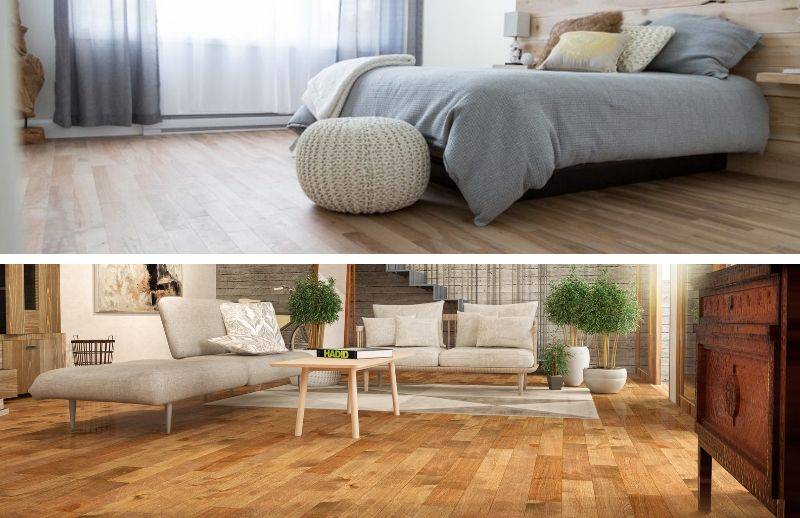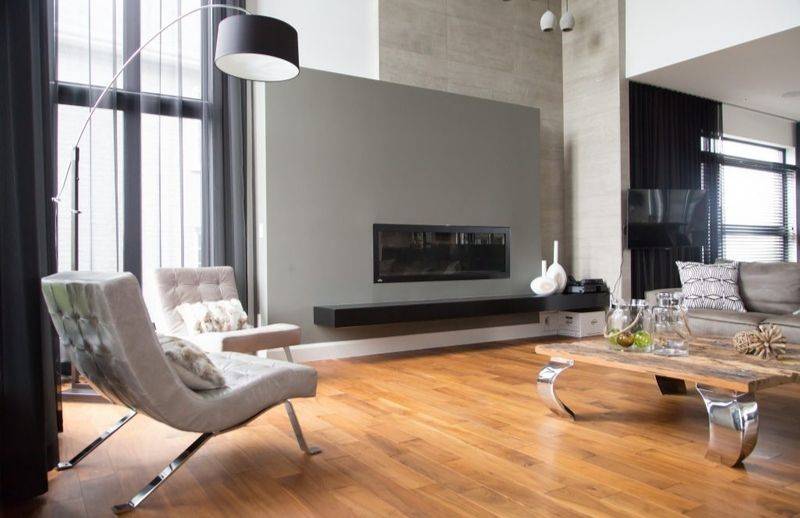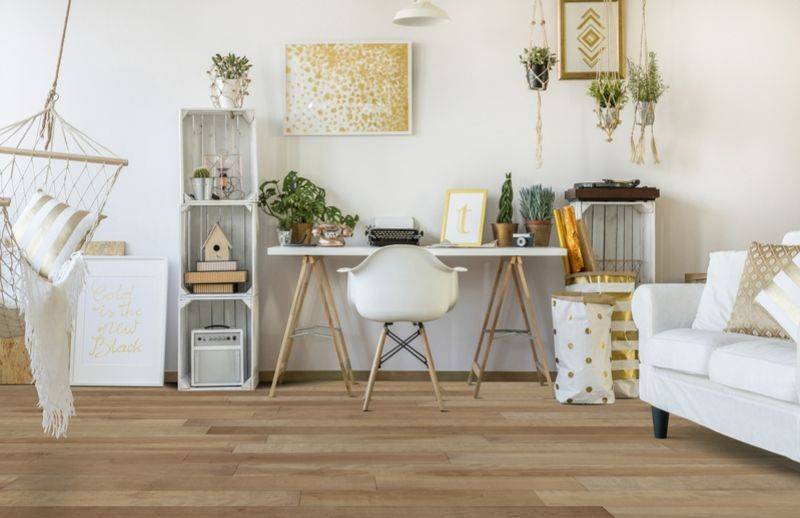
Hardwood
Oiled and varnished hardwood floors: where do they stand out?
Where does your heart sway between varnished or oiled hardwood floors? It can be difficult to choose between these two wonderful options. To make a well-informed decision, here are the features and benefits of each.
A different style and finish
One is rustic, the other modern.
The striking difference between these two types of floors is the look. Oiled wooden floors have a rougher, more rustic appearance and their streaks are highlighted. Whereas its varnished version hides the grain more easily and is more refined. Thus, varnished wood is suitable for contemporary and classic designs, while oiled wood is often used in more rustic decor. On the other hand, it is not uncommon to see beautiful mixes, such as a modern finished floor covering in a country style home.

Deeply oiled: a bonus!
An oiled floor has the particularity of being dyed in depth. It will therefore keep its appearance longer. Its look is timeless. Note that it cannot be sanded and given a different colour since all layers of wood are oiled, unlike varnished wood, which has only one layer on the surface. Also, the fact that it is deeply oiled allows the masking of imperfections (see paragraph below).
Long term benefits
Which one is more eco-friendly?
Many turn to oiled wood for its greener properties. We know that varnish used to be made from chemicals that were harmful for the environment. Nowadays, there are varnishes that are more respectful. However, even the latter cannot compete with the softness of vegetable oils that come from natural sources that are not harmful to the environment. And they do not produce any dangerous odours during application. But be aware that wood, regardless of its finish, is always an ecological option since it is a renewable material.

Which one will last in time?
Due to its high resistance, oiled wood keeps its beautiful appearance longer than varnished wood. Moreover, oiled floors look better over time for a distinctive style. However, it is not a design that appeals to everyone. Also, the oiled floor can easily withstand changes in temperature and humidity. So much so, that it is possible to install it in a bathroom. Ask a Déco Surfaces expert for more information on this subject.
Which one is better to conceal imperfections?
Oiled floor! Indeed, varnished wood has only one protective layer on its surface, which makes it more fragile. You can choose a matte, satin or glossy finish. It should be noted that the more the varnish has a mirror effect, the more visible the imperfections would be. For its part, the oiled floor is soaked with oil not only on the surface, but also in all its layers. This brings out all the details of the wood. Outcome? Scratches and gaps are better concealed.

Daily life with your floor
Which one is easier to clean?
Varnished floors require less maintenance than oiled floors. The latter must be cleaned regularly with a damp cloth, as an accumulation of dust and sand can damage it. Also, it should not be washed with a product that contains degreaser like most general-purpose floor cleaners. It is better to use a product specially designed for this type of flooring. Oiled wood usually requires a new layer of oil every year (depending on its wear and tear), while varnish can remain in place for about ten years.
Oiled flooring: easy to fix
Your pet loves to stick its claws in your beautiful floor? Do your toddlers and their toys damage your flooring? If you have an oiled wooden floor, it will be much easier to repair imperfections. Simply visit a Deco Surfaces store to get a repair kit. It contains, among other things, a wax stick (or oiled pencil) that will restore the flooring's nobility.
Hardwood flooring is popular, regardless of its finish. Oiled or varnished, it is resistant and adds warmth and value to a property. The important thing is to listen to your heart: what kind of product is it beating for? Visit a Deco Surfaces store to see (and touch) all the possibilities: you will probably fall for one of them!

